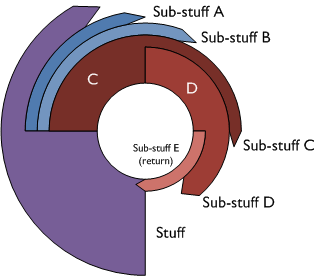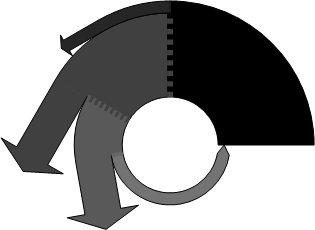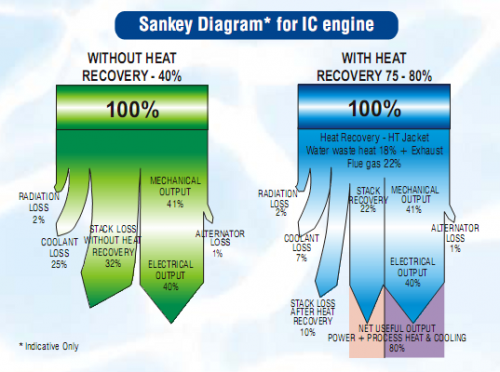Chris the VisioGuy recently came up with Radial Sankey Diagrams. Although he didn’t seem to be sure if there is a “need for radially-oriented Sankey diagrams”, the commentators of his post immediately came up with ideas: use for rotating or radiating processes, cigarette rolling, recursive industrial processes, reinvestments, and so on… even stellar nuclear reactions were mentioned.
This is the ‘Everything Radial’ Circular Sankey Diagram
… and this is the ‘Tangential Fly-off’ Circular Sankey Diagram
One concern seems to be that the proportional arrow magnitude doesn’t work that well, since the human eye perceives the arrow area rather than thickness in such a circular Sankey diagram.
Thanks VisisoGuy for this contribution to the big basket of Sankey diagrams



